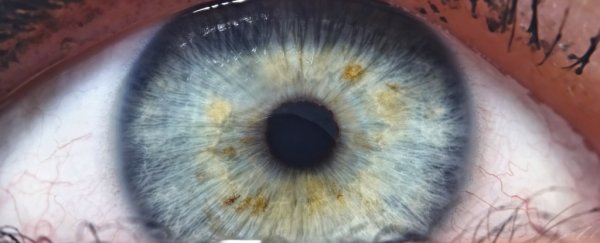Researchers have discovered a brand new type of photoreceptor - a type of molecule that allows our eyes to receive light - and it's unlike anything we've seen before.
The new photoreceptor is only the third to be found in animals, and it's about 50 times more efficient at capturing light than the photoreceptors in our human eyes. Intriguingly, it's actually a taste receptor - suggesting that molecules are capable of detecting light in ways we never thought possible.
Known as LITE-1, the new photoreceptor was discovered in a group of eyeless, millimetre-long roundworms known as nematodes.
"LITE-1 actually comes from a family of taste receptor proteins first discovered in insects," said lead researcher Shawn Xu from the University of Michigan. "These, however, are not the same taste receptors as in mammals."
Back in 2008, Xu's lab showed that nematodes are capable of moving away from flashes of light, even though they lack eyes, and they found that LITE-1 seemed to be behind this ability.
But no one had really known how that was possible. Now Xu's team has put studied LITE-1 in detail to test how it senses light, and has shown that the protein is incredibly efficient at absorbing light - and it does so in a whole new way.
Until now, researchers only knew of two types of photoreceptors on the animal world: cryptochromes and opsins. The type of photoreceptor found in the human eye is an opsin known as rhodopsin.
These typically have two components: the base protein, which for us is rhodopsin, and a light-absorbing chromophore. In humans, vitamin A plays that role.
How it works for us is that the vitamin A absorbs light and releases a range of chemicals as a result. These chemicals are then sensed by rhodopsin, which is how it 'receives' light.
But LITE-1 is totally different. It plays both those roles itself, and absorbs light directly.
"LITE-1 is unusual in that it is extremely efficient at absorbing both UV-A and UV-B light - 10 to 100 times greater than the two other types found in the animal kingdom: opsins and cryptochromes," said Xu.
"The next step is to better understand why it has these amazing properties."
While uncovering this new method of absorbing light is fascinating in itself, the researchers also think LITE-1 might be incredibly useful. For example, it could be turned into a sunscreen that directly absorbs harmful rays more efficiently than our current creams.
And it could also lead to researchers triggering light sensitivity in new types of cells - the team has already modified a nonlight-sensitive protein in the same family, known as GUR-3, and shown that they can make it react to ultraviolet light.
"Our experiments also raise the intriguing possibility that it might be possible to genetically engineer other new types of photoreceptors," said Xu.
The research has been published in Cell.
